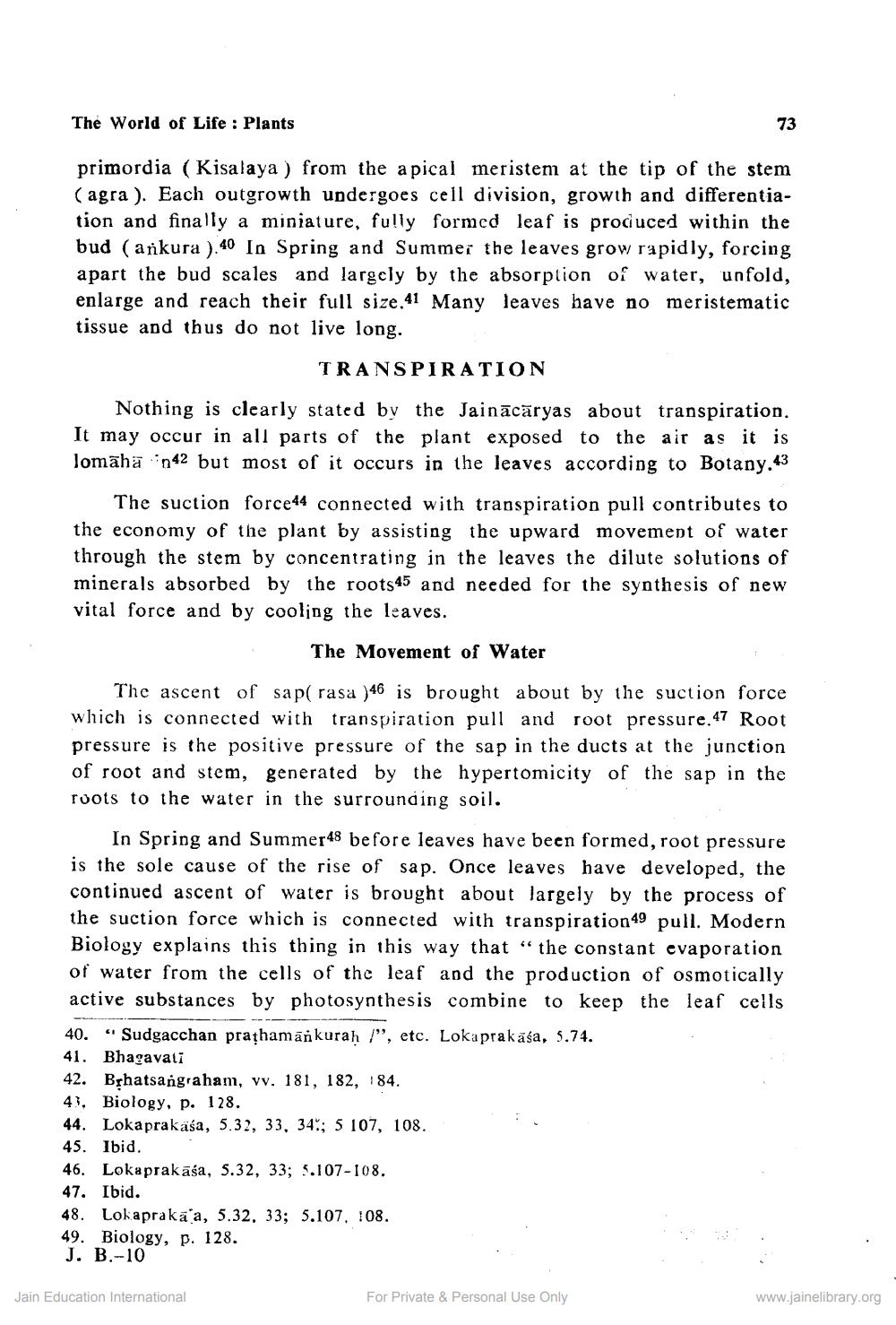________________
The World of Life : Plants
73
primordia (Kisalaya) from the a pical meristem at the tip of the stem (agra ). Each outgrowth undergoes cell division, growth and differentiation and finally a miniature, fully formed leaf is produced within the bud (ankura ).40 In Spring and Summer the leaves grow rapidly, forcing apart the bud scales and largely by the absorption of water, unfold, enlarge and reach their full size.41 Many leaves have no meristematic tissue and thus do not live long.
TRANSPIRATION
Nothing is clearly stated by the Jainācāryas about transpiration. It may occur in all parts of the plant exposed to the air as it is lomāhā 1942 but most of it occurs in the leaves according to Botany.43
The suction force44 connected with transpiration pull contributes to the economy of the plant by assisting the upward movement of water through the stem by concentrating in the leaves the dilute solutions of minerals absorbed by the roots45 and needed for the synthesis of new vital force and by cooling the leaves.
The Movement of Water
The ascent of sap( rasa )46 is brought about by the suction force which is connected with transpiration pull and root pressure.47 Root pressure is the positive pressure of the sap in the ducts at the junction of root and stem, generated by the hypertomicity of the sap in the roots to the water in the surrounding soil.
In Spring and Summer 48 before leaves have been formed, root pressure is the sole cause of the rise of sap. Once leaves have developed, the continued ascent of water is brought about largely by the process of the suction force which is connected with transpiration 49 pull. Modern Biology explains this thing in this way that “the constant evaporation of water from the cells of the leaf and the production of osmotically active substances by photosynthesis combine to keep the leaf cells 40. “Sudgacchan pratham ārkurah !”, etc. Lokaprakāśa, 5.74. 41. Bhagavati 42. B hatsangraham, vv. 181, 182, 184. 4. Biology, p. 128. 44. Lokaprakaśa, 5.32, 33, 34; 5 107, 108. 45. Ibid. 46. Lokaprakāśa, 5.32, 33; 5.107-108. 47. Ibid. 48. Lokaprakā a, 5.32, 33; 5.107, 108. 49. Biology, p. 128. J. B.-10
Jain Education International
For Private & Personal Use Only
www.jainelibrary.org




